Home Room
As a brutal housing market pushes homelessness in the Flathead Valley into uncharted territory, its impacts have been particularly harsh on local schoolchildren and the educators tasked with supporting them
By Denali Sagner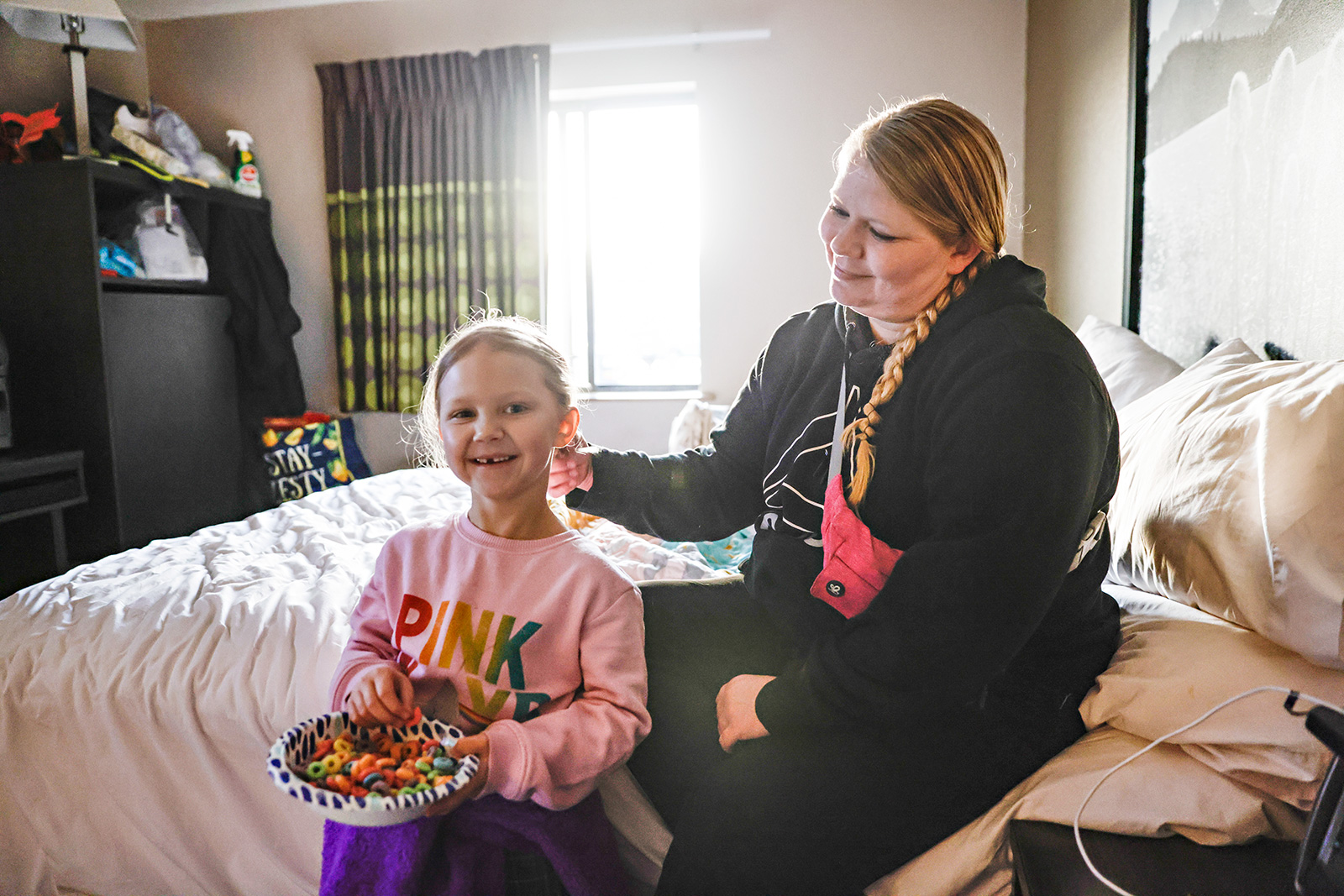
For the past six months, Reanna Taliaferro, her two children, and the family’s mixed-breed rescue dog have shared a 270-square-foot hotel room on the outskirts of downtown Kalispell. Filled with emblems of childhood chaos — old Halloween costumes, homework sheets, ramen noodles and teddy bears — the small space is the most constant home the family has had in years. While not ideal, the hotel room offers privacy, a bathroom and a heating system, which is more than Taliaferro can say for other recent living arrangements.
As the family’s after-school routine unfolded on a recent weekday evening, Taliaferro described her enduring struggle with the Flathead Valley’s harsh housing market and its impacts on her two children, who have been forced to weather the storm of homelessness alongside their mother for the past three years. The family has been without stable housing since October 2019, when an unexpected eviction pushed them onto the streets and into a sequence of transitional living situations. Her daughter, a first grader, and her son, a freshman in high school, are both enrolled in Kalispell schools.
Taliaferro’s saga with housing — or a lack thereof — is a long one. The mother of two recounted renting rooms in friends’ houses, bouncing between a series of shelters and spending three months in the family’s car, where police often questioned her and security duties were left up to her dog. Since June, the family has paid close to $1,000 per month to stay in the hotel, where Taliaferro picks up shifts as a housekeeper. She receives a slightly discounted rate on the room, but thinks that the hotel is not “that fond of the employees living there,” which adds a layer of volatility to the family’s only steady housing in recent memory. Taliaferro’s children have struggled through the changes, especially her older son, as the instability has bred a host of emotional, academic and developmental challenges.
“I just want a change,” she said.
In recent years, economic and demographic shifts in the Flathead Valley have created an unprecedented homelessness crisis, one that has pushed hundreds of residents out of their homes and into a hodgepodge of makeshift living conditions, including shelters, parking lots and overcrowded rentals. While homelessness cuts across the valley demographically, its effects have been particularly harsh on local schoolchildren, many of whom have absorbed the weight of housing instability as a burdensome addition to the everyday contents of their backpacks. Though federal legislation mandates a slew of provisions to support unhoused students, educators in local schools are finding themselves up against increasing caseloads, soaring housing prices and a stubbornly limited supply of affordable homes in the area, making it increasingly difficult to help the children they are tasked with serving.
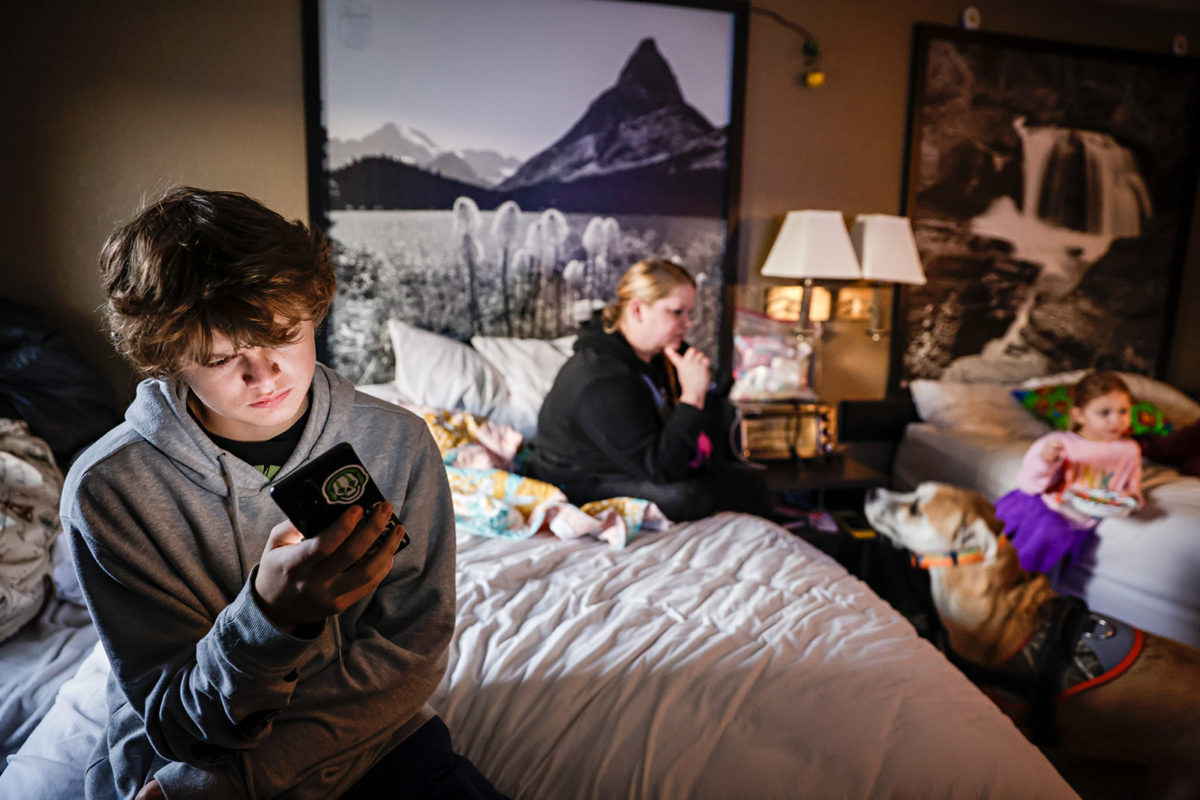
Homeless schoolchildren in the United States are protected under the 1987 McKinney-Vento Homeless Assistance Act, a federal law guaranteeing that “each child of a homeless individual and each homeless youth has equal access to the same free, appropriate public education” as their peers in stable homes. McKinney-Vento aims to lower barriers to education for unhoused students, including provisions like subsidized transportation, free breakfast and lunch and the right for children to attend their “school of origin” — the school they attended when they first became homeless — even if their family is forced to move outside of the district for temporary housing. The law also mandates that school districts appoint a McKinney-Vento liaison, or a staff member who is responsible for supporting students experiencing homelessness.
Casey Driscoll is the McKinney-Vento liaison for the Kalispell and Evergreen school districts and the director of the HEART Program, a nonprofit organization that supports the districts’ unhoused students and families. Driscoll, whose salary comes from a combination of federal funds, is responsible for ensuring that schools comply with McKinney-Vento and works to identify and support students experiencing homelessness; or, as she calls them, “students living in transition.”
As she oversees the HEART Program’s “locker,” a gymnasium of donated clothes, shoes and school supplies where families can come “shop” for their children, Driscoll toggles between greeting families, supervising students and managing a team of volunteers. While families shop, Driscoll chats with children about homework, snowstorms and new shoes.
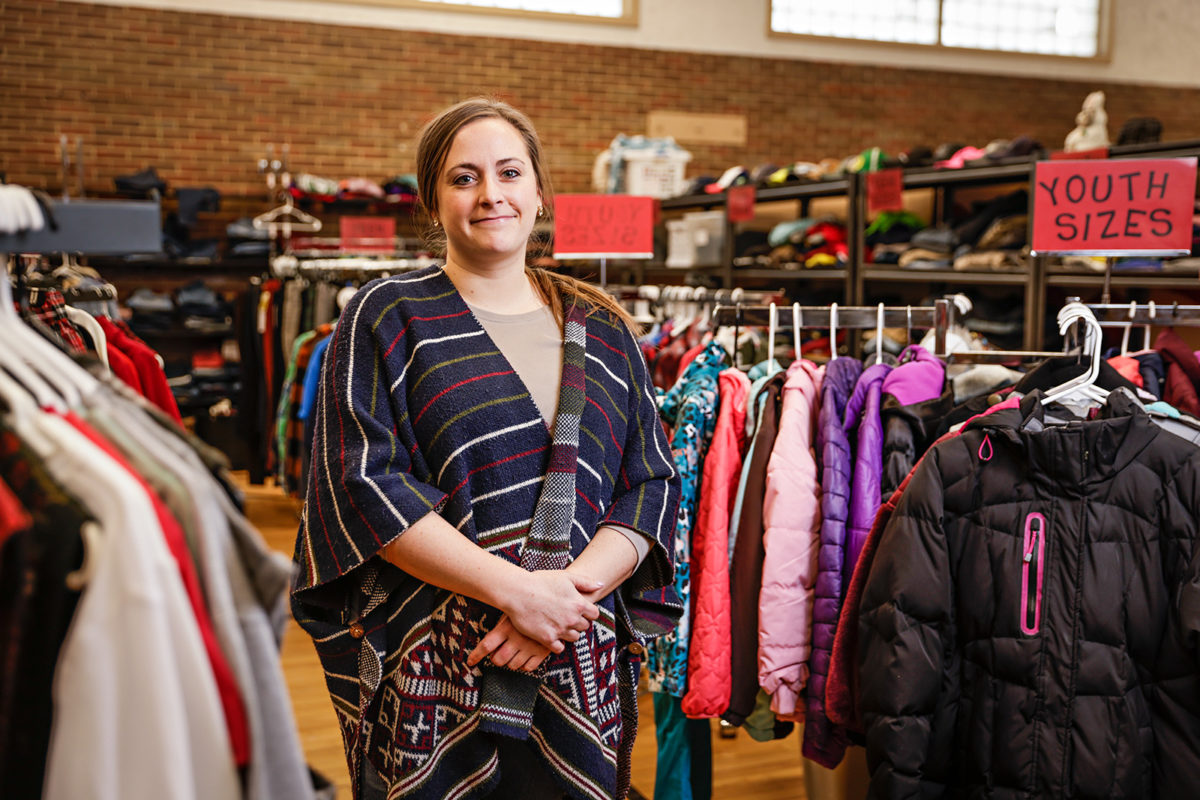
McKinney-Vento liaisons like Driscoll wear many hats, threading a delicate needle as both a federally mandated administrator tasked with compliance and a pillar of emotional support for struggling families. As school officials, liaisons’ days are often crammed with administrative tasks, such as identifying and managing a caseload of unhoused schoolchildren. Driscoll keeps a confidential master list of students experiencing homelessness, which she constantly updates as new leads appear on her desk.
As the number of families experiencing homelessness in the Flathead Valley has risen in recent years, so too has Driscoll’s caseload, as seismic shifts in the housing market have rendered affordable housing nearly impossible to find.
During the pandemic years, an influx of new residents pushed housing prices up and constricted an already limited supply of homes. Median listing prices for homes in Flathead County increased from $487,000 in June 2019 to $678,750 in June 2022, with the number of active listings in the same period dropping from 1,051 to 628. Rental prices also rose dramatically.
Earlier this year, the Montana Continuum of Care Coalition (CoC) reported 319 individuals experiencing homelessness living in the Kalispell area, an increase from the 235 individuals counted in 2020. Kalispell currently boasts the second-highest number of unhoused individuals in the state of Montana, surpassing larger cities such as Billings, Helena, Great Falls, Bozeman and Butte, a statistic that has alarmed local leaders in recent meetings about the homelessness crisis.
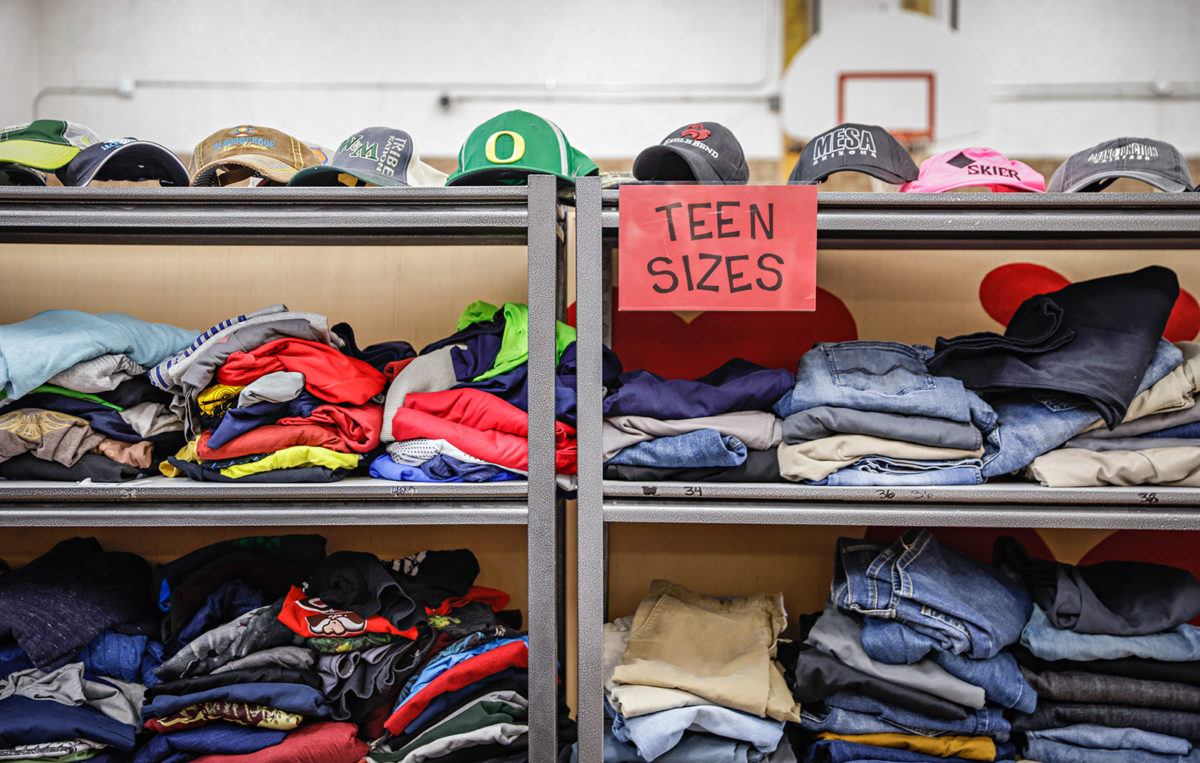
Kayce Ellman, a patron of the HEART Program, whose five children in the Kalispell school district range from elementary to high school, described being priced out of the home she had rented for six years. Ellman said that when the pandemic hit, her landlord raised the rent beyond what the family could afford. With two of her young sons sitting beside her, Ellman recounted moving the entire family into a “run-down” trailer almost a year ago, where they’ve lived ever since. The family pays $1,000 per month to rent the trailer, which has shoddy windows and black mold on certain walls.
“It’s a crappy rental for too much,” Ellman said.
Cases like the Ellman’s end up on the desks of McKinney-Vento liaisons more and more often these days. Both Driscoll and Tamara Sundberg, the student and family advocate and McKinney-Vento liaison for the Columbia Falls School District, said they have been inundated with new families who never struggled with housing until recently, when the valley’s prices simply became unaffordable.
“A lot of families have been kicked out or had the rent jacked up to a price that they couldn’t afford because of the market,” Driscoll said. “There are certain people that want to turn their rentals into an AirBnB, and then we have displaced families with nowhere to go.”
Rachelle Buckley, executive director of the Sparrow’s Nest, a home for unaccompanied high school students experiencing homelessness in the Flathead Valley, has observed similar changes in recent months. Buckley said that she has seen an increase not only in the number of unhoused students, but in the types of students in need of her services. While the home has historically taken in teenagers escaping households afflicted by domestic violence and drug addiction, more and more often, students are coming in whose parents could no longer pay rent.
“We know that this issue is getting more and more pervasive,” Buckley said. “These kids are stuck in these impossible situations.”
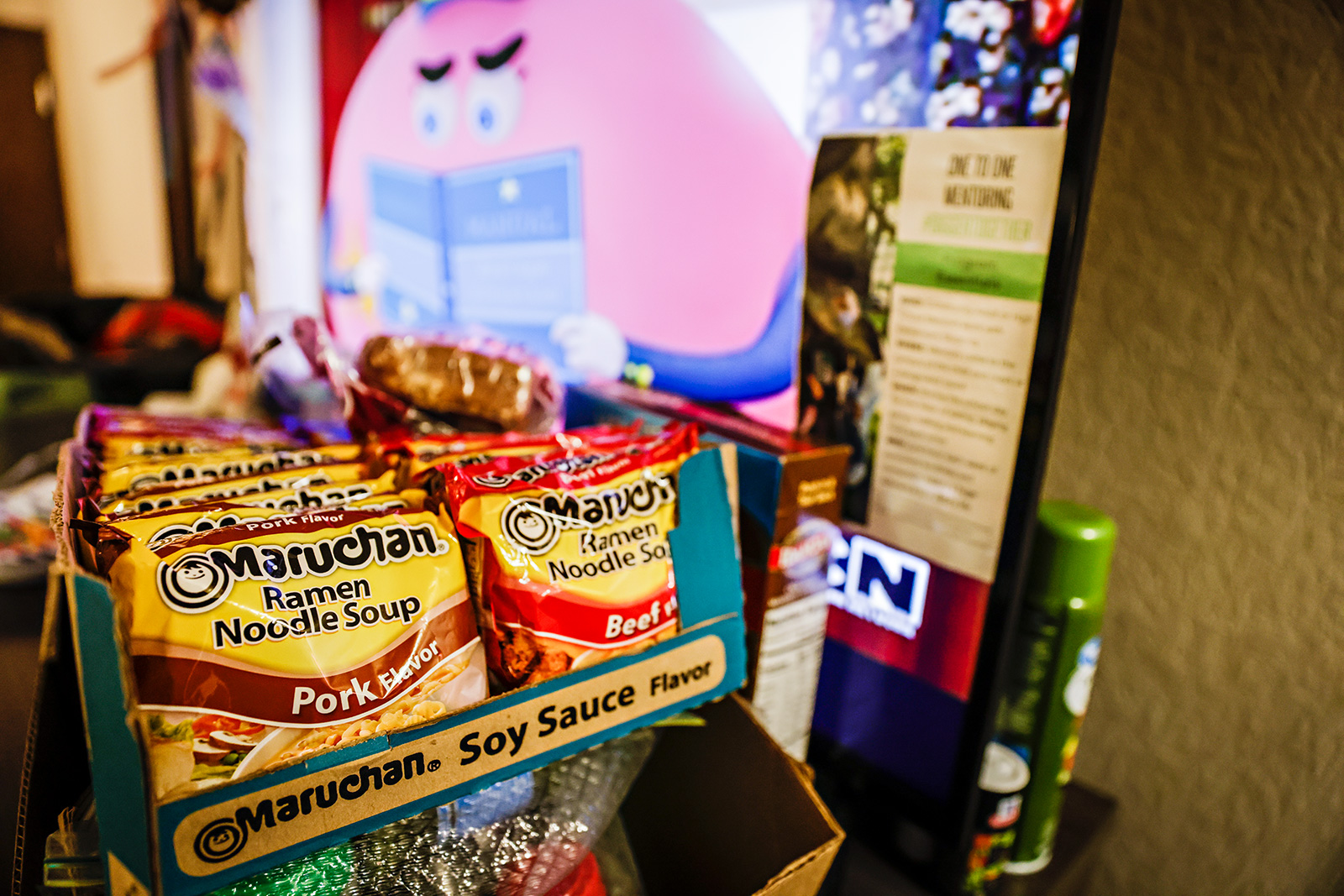
Though rural and urban youth experience homelessness at nearly the same rates, it can be difficult to paint an accurate picture of unhoused students in rural communities like the Flathead Valley, where schools, homes and support organizations can be sparse and far apart.
In a phenomenon that experts have called “the invisibility of rural homelessness,” this lack of tight-knit infrastructure can allow unhoused children to fall through the cracks, as organizations and schools stretched across vast expanses struggle to communicate with one another and stay in contact with families. Unlike major cities, where an eviction can mean a move down the block, an eviction for families in the Flathead Valley can mean relocating dozens of miles away, making it easy for school officials to lose track of students entirely. This phenomenon has long obscured counts of unhoused schoolchildren, which remain vastly underreported.
The structure of rural communities can also make delivering resources a complicated task. According to a 2020 report by policy research institute Chapin Hall at the University of Chicago, the majority of rural areas reported having insufficient resources for supporting children experiencing homelessness. Though shelters, food pantries and clinics exist in communities like the Flathead, parents and students are often forced to travel long distances to access them, a burden that can quickly become insurmountable.
Even in Columbia Falls, one of the valley’s more densely populated school districts, Sundberg is familiar with the challenges of staying in contact with and providing resources to unhoused students, a problem she said was made more difficult when the district switched to a remote model during the pandemic. Some of Sundberg’s students struggled to keep in contact due to rapidly changing housing situations, and others dropped out of high school entirely. Though she and her team contacted every single family within the high school during the remote weeks, she said it was impossible to provide resources to every single student in need.
“There’s simply too many family members in this community that are struggling,” she said. “We do the best that we can.”
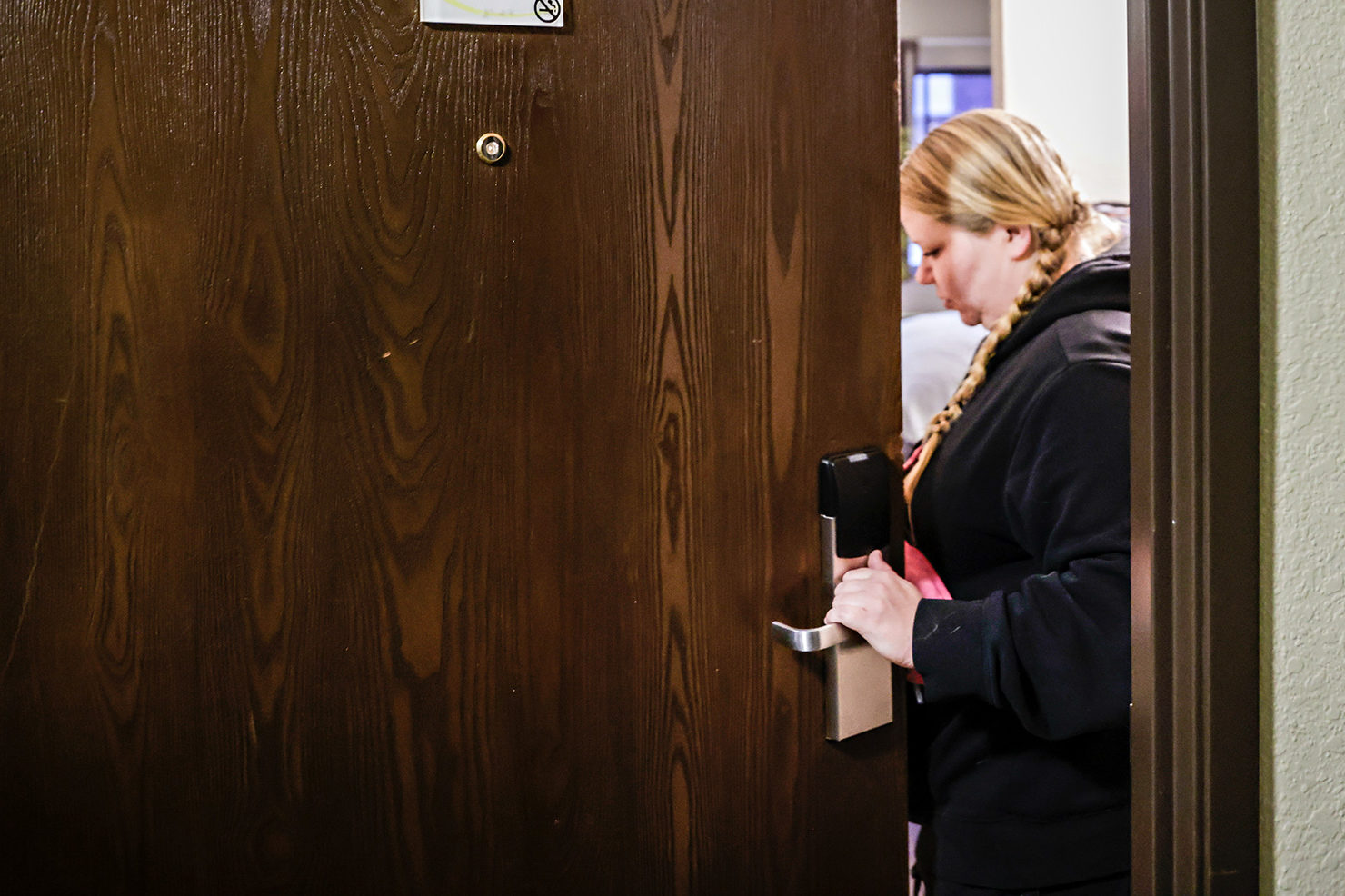
Taliaferro said it’s been difficult for her son to do well in school, and that he’s started to show signs of depression, which she attributes in large part to the lack of privacy that comes with living in a hotel room. While her daughter is less phased by the family’s housing situation, jumping between the room’s two queen beds and babbling about first grade in between bites of fruit loops, the wear of homelessness appears more clearly in Taliaferro’s son.
“I think it’s really impacted them,” Taliaferro said. “I hear it from my son all the time, ‘I just wish we had a place, Mom. I want my own space.’ He’s a teenage boy; he wants to have his own space, videogames and hangout friend time. I get it. He doesn’t want to be in a hotel room with his mom and his sister right there.”
Taliaferro’s son is far from alone in the developmental struggles that come with youth homelessness. According to a report by the U.S. Department of Health and Human Services, children who experience homelessness show significantly higher rates of emotional, behavioral and physical health problems, and face greater chances of developing self-esteem issues, which put them at risk for substance abuse and suicide. Children in unstable housing often struggle with poor school attendance, which can contribute to learning setbacks and failures to graduate high school. This cycle is particularly harsh, as not completing high school is the single greatest risk factor associated with experiencing homelessness again as a young adult.
“Being in a situation where you don’t have a stable home, where you’re worried about where you’re going to sleep that night or what you’re going to eat for dinner, it can be hard to focus on schoolwork,” Driscoll said. “It can be stigmatizing, it can be embarrassing, and it can really take a toll on a student’s self-esteem, which then can affect their mental health.”
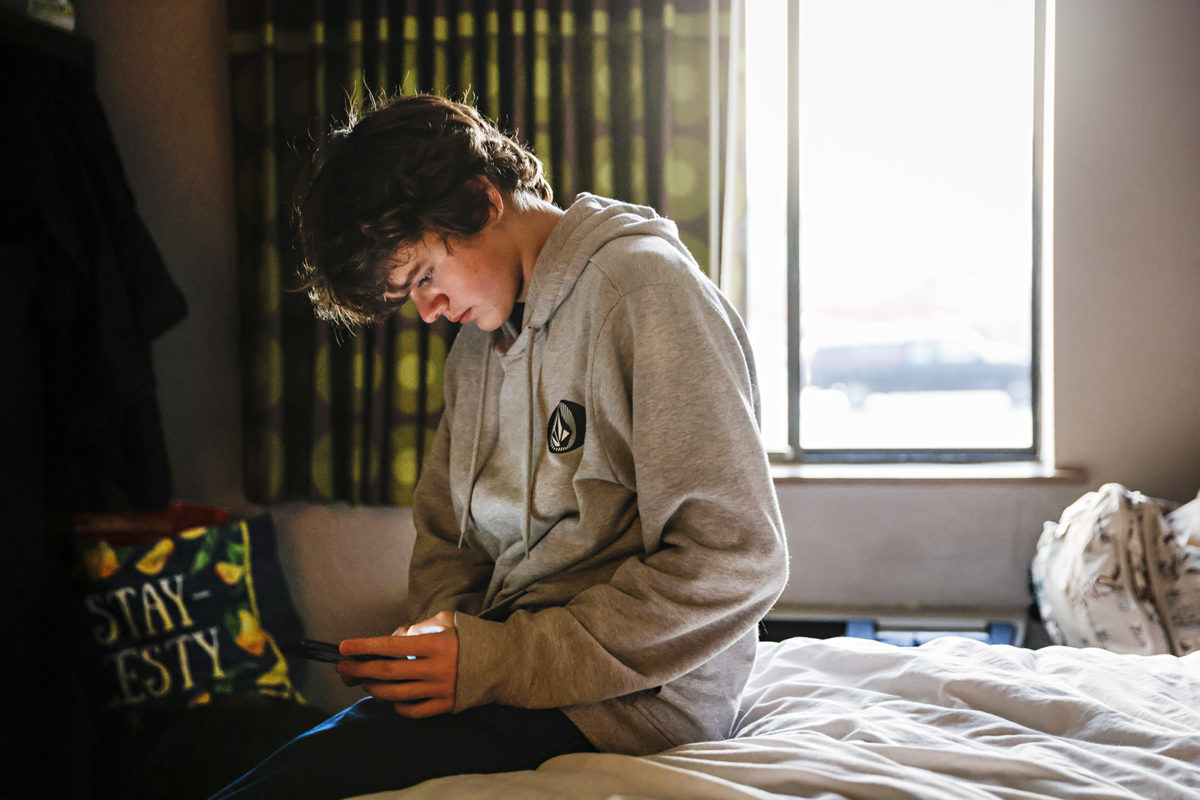
Sundberg said that during the pandemic, the coalescing pressures of economic downturn, social isolation and COVID-19 infections forced many of her students to take on the roles of their parents, as family members became sick and school closures put a strain on childcare access. While the impacts of the pandemic cut across the Columbia Falls student body, Sundberg said that students in unstable housing were most likely to bare the burden of excess responsibility, helping their parents navigate homelessness and poverty while attempting to finish school themselves.
“That’s a huge amount of weight to put on their shoulders,” Sundberg said. “There’s a different perspective when you go through something traumatic.”
Sundberg told the Beacon that while her students are “resilient and hardworking” and “want to be in school,” the mental health problems associated with homelessness can be overwhelming, and resources can be inaccessible.
While Sundberg spends much of her day providing emotional support to students, she said her help can only extend so far, given the lack of affordable mental health services available in Montana. Oftentimes, Sundberg’s only option is to refer students to private mental health providers, whose rates are unaffordable to many families. The National Alliance on Mental Illness in February 2021 reported that 47,000 Montanans did not receive necessary mental healthcare, 48.6% of who said it was due to the high cost of access.
“This puts a huge toll on students,” Sundberg said. “Some of the students we work with are dealing with a lot of external barriers to their success.”
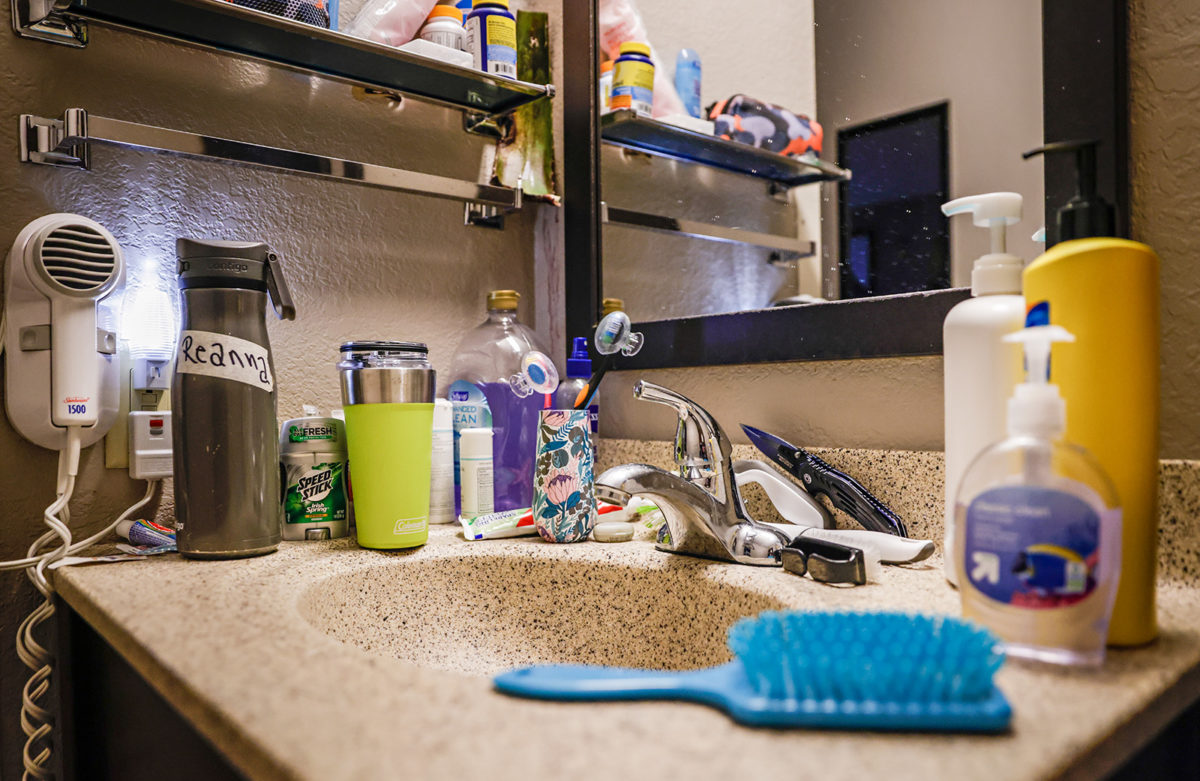
Despite the patchwork of challenges, Driscoll is proud of the services she has been able to provide. The HEART Locker is almost always packed during shopping hours, and families leave each week with winter coats, school supplies, gas cards and food.
“We are, as a school district, improving our ability to identify and reach out to these students,” she said.
Driscoll’s HEART Program stands out as a successful example of youth homeless assistance in the valley. Buckley at the Sparrow’s Nest called Driscoll and the HEART Program “the gold standard,” commending the program’s effectiveness. In addition to the locker, the HEART Program operates food pantries in local schools, a monetary fund for needs not covered by the school district and a “Learning Center,” a safe and quiet space for high school students to do homework and connect with resources.
While Taliaferro said she appreciates the work of the HEART Program, what she and her children need most desperately is housing, something the school district cannot help her with. She has sat on low-income housing wait lists for years, with no results. Even the valley’s cheaper rentals far exceed her price range. At times, she has even considered sending her son to live with friends, so that he can finish out high school in a more stable setting.
“I don’t know what else to do. I don’t want to be living in a hotel. I want to have an apartment or, preferably, a house and a yard. But it’s impossible, it feels like,” she said. “Every time I plan something, it just doesn’t work.”
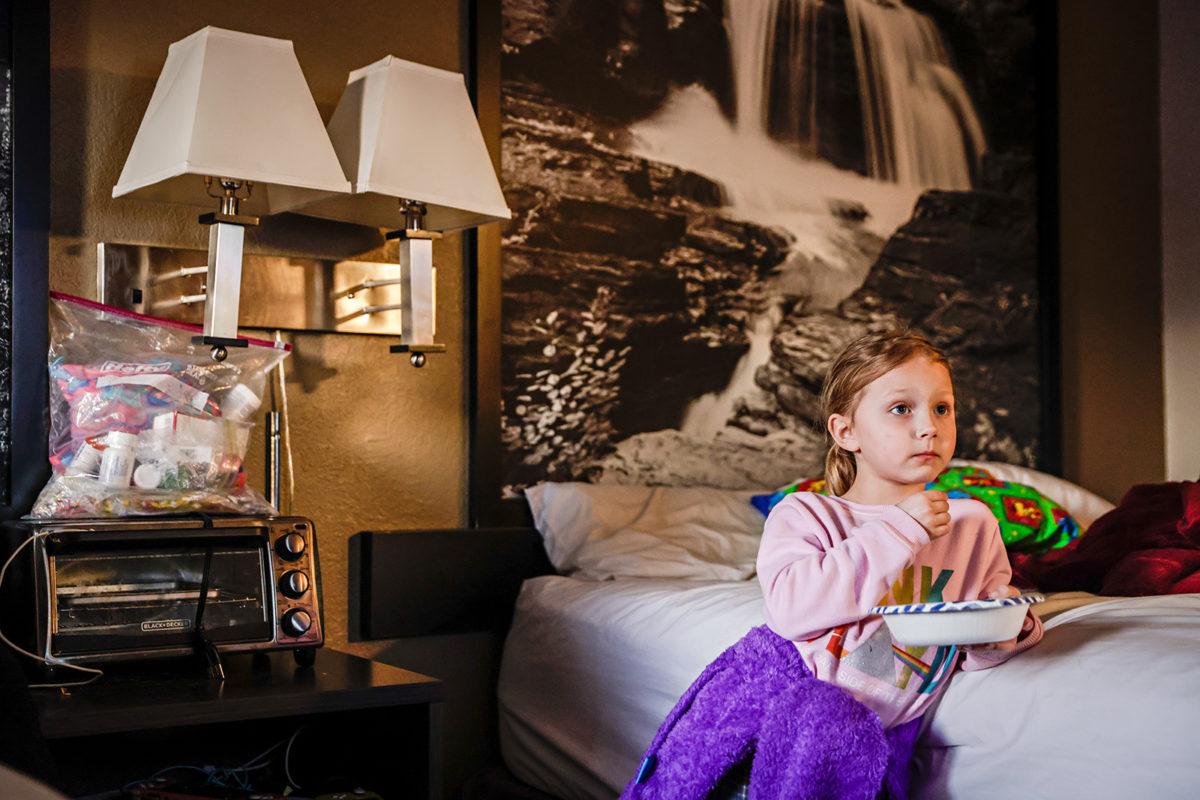
While sitting at the HEART Program on a recent evening, Taliaferro received a phone call about a possible rental apartment for her family. She said that tips on housing come and go, and often lead nowhere. This one, too, would ultimately never pan out.
When asked if she’s considered leaving the Flathead Valley altogether, she laughed.
“Heck yeah,” she said.
Ultimately, though, Taliaferro stays for her son. While her daughter is young enough to adjust to a move, her son is in the middle of his teenage years, and a life change like that would be a major disturbance.
“My son is 15 and he’s lived here pretty much his whole life,” she said. “I do want to move for quite a few reasons. But I also consider his feelings, because I remember being his age, too. I can’t uproot everything that he really, truly does know and put him in a whole situation and environment where he’s just miserable. I’ve got to make it work.”